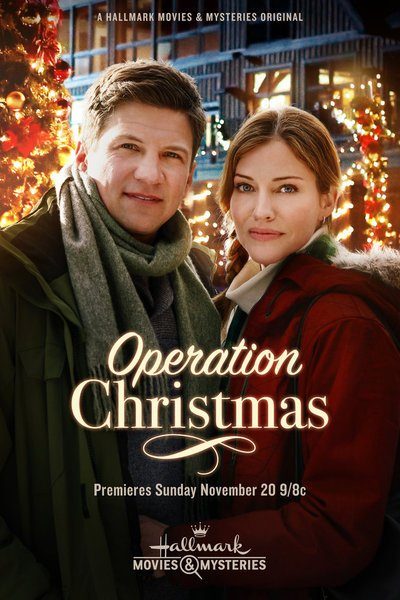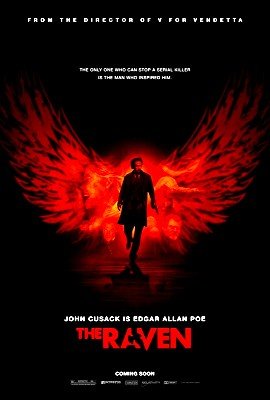“Lord Bless a Sacrificial Heart”

| None | Light | Moderate | Heavy | |
|---|---|---|---|---|
| Language | ||||
| Violence | ||||
| Sex | ||||
| Nudity |
What You Need To Know:
John Cusack is almost perfectly cast as Edgar Allen Poe. THE RAVEN sags in the middle, especially when some plot points become muddled. However, the ending is absorbing, though not everything ends happily. The violence in THE RAVEN is extreme, with both blood and gore, but not constant. Also, there’s too much gratuitous foul language. This content demands extreme caution. Otherwise, however, the movie’s redemptive worldview extols sacrifice. Adding to this redemptive worldview are some images of Christian crucifixes and references to angels. Also, the Poe character repeats a line that the real Poe is alleged to have said, “Lord help my poor soul.” Poe looks up toward Heaven when he says this poignant line.
Content:
(C, BB, P, RoRo, LL, VVV, S, N, A, M) Light redemptive worldview that extols sacrifice for those one loves and includes some Christian crucifixes, references to angels, and an actual, rumored quote from the real Edgar Allen Poe who once said, “Lord help my poor soul” and movie repeats the quote, with some strong moral elements of trying to stop an evil serial killer and save a damsel in distress, and a positive view of American policemen fighting crime, plus some strong Romantic elements touching on Poe’s Romantic view of artistic expression and his rebellious nature (the real Poe was also an alcoholic, but movie doesn’t make a big deal out of that in telling this particular fictionalized story – it just shows that Poe enjoyed his whiskey, probably a little too much, but it suggests this may be due to the several tragedies in his life); 14 or 15 obscenities (including one “f” word), four strong profanities, and two or three light profanities; very strong gory, bloody violence at times and some light action violence includes woman’s neck has deep bloody cut, giant ax on giant pendulum slices through man’s body and cuts him in two before wooden table stops pendulum from swinging, arm dangles from chimney, woman’s 12-year-old daughter is found murdered and police says she’s been strangled though nothing really gruesome here is shown, dead man’s hand has been sliced through at the wrist and his other writes has a deep bloody cut, another woman’s body lays in a box on a slab at the morgue, dead man’s head is shown, another’s man’s body is found, young woman imprisoned inside wooden coffin by villain who mocks her, woman tries to claw her way out of wooden coffin using one of her ivory stays in her garments, crows pick at dead cat and man examines carcass, severed tongue is found, villain slashes policeman’s throat as he jumps down from ledge and policeman bleeds to death, protagonist examines a human heart he says he got from the morgue, shots fired and one man is hit in upper chest so bullet has to be removed; no sex scenes but couple passionately kisses and man plays with the string on top of the bodice of her dress and unties it but nothing further appears to happen or is shown; brief upper male nudity; alcohol use and it’s implied man is a drunkard but no drunkenness really shown; no smoking or illegal drugs, though woman may be knocked out by something on handkerchief covering her mouth; and, protagonist has rebellious attitude at times, protagonist takes/steals another man’s drink, and an interest in the macabre.
More Detail:
More interesting, however, is the fact that the movie has a redemptive worldview that extols sacrifice. It also has positive references to angels. Finally, it includes a positive appeal to the Lord, or God, by the protagonist in the throes of tragic circumstances. That gives THE RAVEN a poignancy that never appears in today’s other gruesome horror movies about similar murder and mayhem.
The movie opens in 1849 with the Baltimore police discovering the murder of a woman and her 12-year-old daughter. The crime scene seems familiar to Detective Emmett Fields.
Cut to Edgar Allen Poe returning to Baltimore. He’s trying to get a free drink in a seedy saloon. He causes such a ruckus that the bartender gets two customers to toss him out on his ear.
The next day, Poe visits the local newspaper that sometimes publishes his stories and reviews. He discovers the publisher didn’t run a review he gave him. So, how is he going to get money for his next drink, much less his next meal?
Poe visits his girlfriend, Emily, but Emily’s father, a self-made industrialist, is none too happy with Poe’s attentions toward his daughter. Later, she visits him in his apartment, where they talk and kiss passionately. The movie suggests they may or may not be doing more than that – no answer is given to that possibility. However, Poe agrees to marry Emily. The problem, of course, is telling her father about their engagement.
The police take Poe in for questioning about the two murders. Detective Fields is suspicious because the two murders from the movie’s first scene reflect details from Poe’s story “Murders in the Rue Morgue.” Fields is about the same age as Poe, but he clearly doesn’t like the nature of Poe’s stories or his reputation. His suspicious grow when they are called to a crime scene of a man cut in half by a huge pendulum with an axe, as in Poe’s “The Pit and the Pendulum.” The fact that the murder victim just happens to be Poe’s professional rival doesn’t help.
A note from the killer challenging Poe to solve the crimes appears to absolve him. Then, a clue suggests that the killer’s next crime scene may be the annual masked ball that Emily’s father holds. Poe fears the worst, because, in his story, “The Masque of the Red Death,” a plague kills everyone attending a ball organized by a prince.
Despite her father’s attitude toward Poe, Emily and Poe plan to reveal their secret engagement at the masked ball. The killer’s apparent plans don’t get Emily’s father to cancel the ball. So, the police force him to allow them to station plainsclothed officers in costume at the ball.
That night, a masked rider on a black horse barges into the ballroom. It’s not the killer, however. It’s actually a diversion so that the real killer can kidnap Emily.
Emily’s father naturally is furious at Det. Fields and Poe. He’s even more angry when he learns the killer has left another note saying he will kill Emily, unless they can find out where he’s hidden her.
The movie reveals the killer has put Emily into a wooden coffin with a thin layer of dirt over it. This, of course, is straight out of Poe’s story “The Premature Burial.” The coffin appears to be located in a room somewhere, with books lying upon some nice bookshelves. So, the question becomes, Can Poe use his knowledge, and personal experience with, the macabre to help the police find and save Emily, and stop the fiend who kidnapped her?
THE RAVEN is fictionalized, but John Cusack is almost perfectly cast as Edgar Allen Poe (he’s too handsome for the role and his eyes don’t reflect the haunted look one sees in photos of the real-life Poe). Despite Poe’s taste for whiskey and his rebellious attitude, the movie makes Poe a sympathetic figure. This is especially true when Emily is kidnapped and viewers learn that, in real life, Poe’s first wife died a horrible, agonizing early death.
THE RAVEN sags a little in the middle, especially when some plot points become muddled. However, the ending is absorbing and suspenseful, though not everything ends happily. Also, Cusack as Poe and Alice Eve as Emily lack chemistry, though Cusack effectively conveys Poe’s concern for Emily after she’s kidnapped.
Though it’s not constant, the violence in THE RAVEN is extreme, with both blood and gore. Also, there’s too much gratuitous foul language. This content demands at least extreme caution.
Otherwise, however, the filmmakers turn their story into a redemptive one. For example, the movie’s worldview extols sacrifice at the end. Poe is ready to exchange his own life to save Emily’s life. Adding to this redemptive worldview are some images of crosses or Christian crucifixes and references to angels. Also, the filmmakers have their Poe character repeating a line that the real Poe is alleged to have said, “Lord help my poor soul.” They have Poe looking up toward Heaven when he says this.
As noted above, it becomes clear early in the movie that the killer is copying the macabre murders and attempted murders in Poe’s own stories. At one point, a character asks Poe, “Surely you can’t write all these things and take no responsibility for it?” Poe’s automatic reaction is, “Is imagination a crime?” Despite his initial reaction, it later becomes clear that Poe grows increasingly haunted by the fact that the killer is using his stories to commit such gruesome crimes, and to kidnap Emily. Thus, there’s a level of media wisdom in THE RAVEN seems almost to go out of its way to acknowledge the real impact that art, and movies, can have on real life.
In the end, however, THE RAVEN is an entertainment. A fairly gruesome entertainment, with some inspiring, poignant elements, but an entertainment nonetheless.
To that end, it seems fitting that we ourselves end with a quote from one of Poe’s less macabre poems, “El Dorado”:
“Over the Mountains of the Moon, down the Valley of the Shadow, ride, boldly ride, if you seek for El Dorado.”


 - Content:
- Content: 




